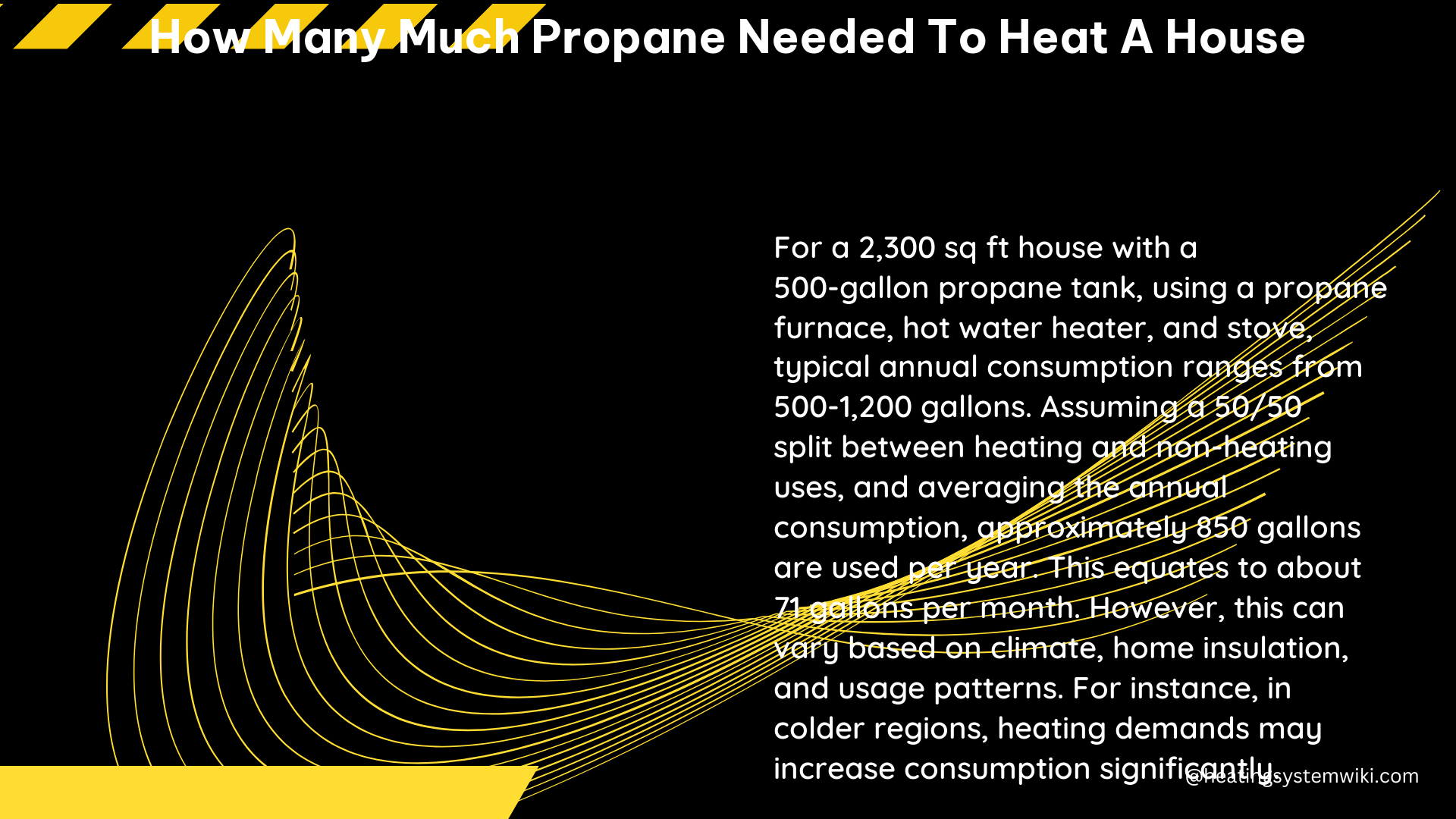Determining the exact amount of propane required to heat a house can be a complex task, as it depends on various factors such as the size of the house, the climate, the efficiency of the heating system, and the number of appliances that use propane. However, by understanding the key factors and implementing energy-efficient practices, homeowners can estimate their propane usage and take steps to reduce their consumption without compromising comfort.
Factors Affecting Propane Consumption for Heating
-
House Size and Insulation: The size of the house is a crucial factor in determining propane consumption. Larger homes generally require more propane to heat than smaller ones. Additionally, the level of insulation in the home can significantly impact the amount of propane needed. Well-insulated homes tend to retain heat better, reducing the overall propane usage.
-
Heating System Efficiency: The efficiency of the propane furnace or boiler used for heating can greatly influence the amount of propane consumed. High-efficiency models, such as those with an AFUE (Annual Fuel Utilization Efficiency) rating of 90% or higher, can significantly reduce propane usage compared to older, less efficient systems.
-
Climate and Geographical Location: Homes located in colder climates or regions with longer heating seasons will generally require more propane to maintain comfortable temperatures throughout the year. For example, a house in Minnesota may need significantly more propane than a similar-sized home in Florida.
-
Number and Efficiency of Propane Appliances: In addition to the heating system, other propane-powered appliances, such as water heaters, stoves, and clothes dryers, can contribute to the overall propane consumption. The number and efficiency of these appliances can impact the total propane usage.
Estimating Propane Consumption for Heating

According to industry data, a typical single-family home with a propane furnace for heating can consume between 500 and 1,200 gallons of propane per year. This translates to approximately 42 to 100 gallons per month. However, it’s important to note that this is a broad estimate, and the actual consumption can vary significantly based on the factors mentioned above.
To get a more accurate estimate of your home’s propane usage for heating, consider the following:
-
House Size: Measure the square footage of your home and use industry standards to estimate the propane consumption. As a general rule, a 1,000 square foot home may use around 500 gallons of propane per year, while a 2,000 square foot home may use around 1,000 gallons.
-
Heating System Efficiency: Determine the AFUE rating of your propane furnace or boiler. Higher-efficiency models (90% AFUE or above) can reduce propane consumption by 10-15% compared to older, less efficient systems.
-
Climate and Location: Research the average heating degree days (HDD) for your local area, which can provide insights into the heating requirements and propane usage.
-
Appliance Usage: Estimate the propane consumption of your other propane-powered appliances, such as water heaters, stoves, and clothes dryers, and add them to the total for your home.
Reducing Propane Consumption through DIY Measures
Homeowners can take several DIY measures to reduce their propane consumption and improve energy efficiency:
-
Install a Programmable Thermostat: A programmable thermostat can automatically adjust the temperature based on your schedule, reducing propane usage during off-peak hours.
-
Improve Home Insulation: Upgrade insulation in walls, attics, and basements to minimize heat loss and reduce the overall heating load.
-
Seal Air Leaks: Identify and seal any air leaks around windows, doors, and other openings to prevent warm air from escaping the home.
-
Upgrade to Energy-Efficient Appliances: Replace older, less efficient propane appliances with newer, high-efficiency models to lower your overall propane consumption.
-
Maintain Propane Appliances: Regular maintenance, such as cleaning or replacing filters and ensuring proper ventilation, can help keep your propane appliances running at peak efficiency.
-
Consider Alternative Heating Sources: Explore the feasibility of transitioning to alternative heating sources, such as solar or geothermal energy, which can reduce your reliance on propane in the long run.
By understanding the key factors that influence propane consumption and implementing these DIY measures, homeowners can take control of their energy usage and reduce their propane costs without sacrificing comfort.
